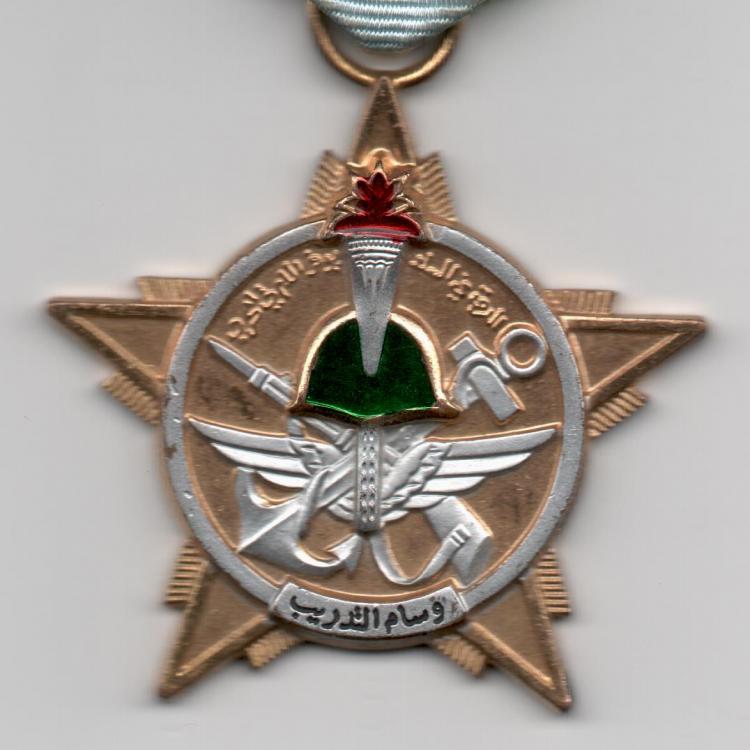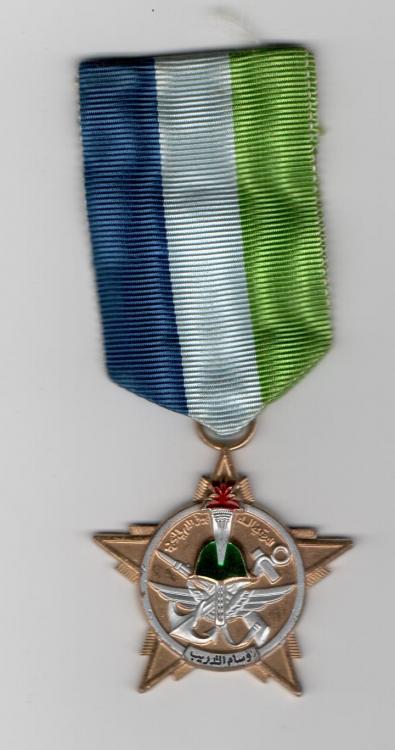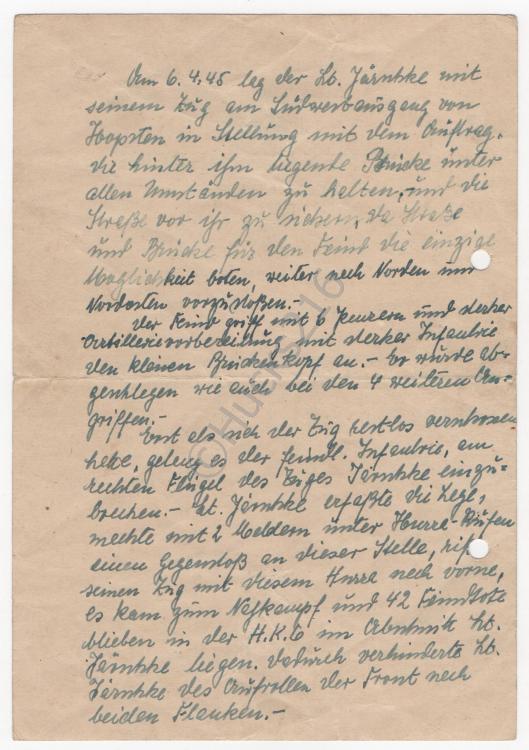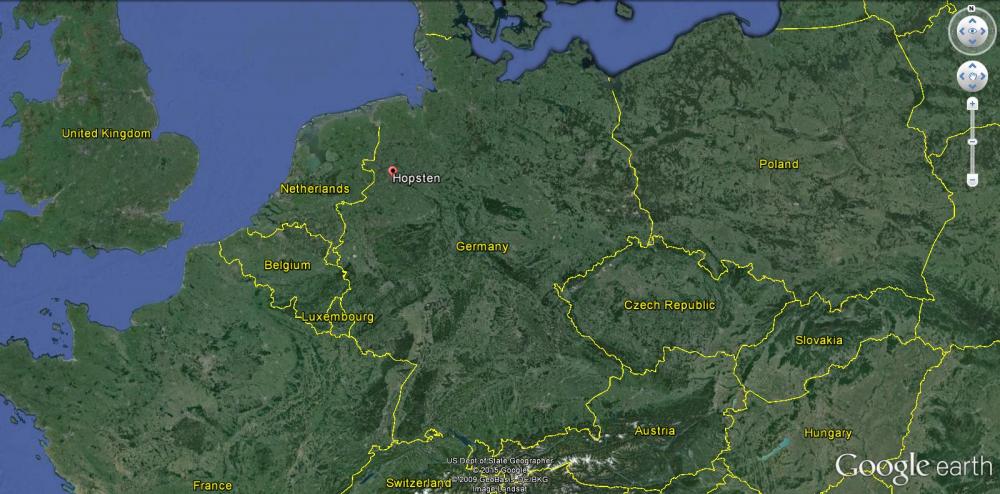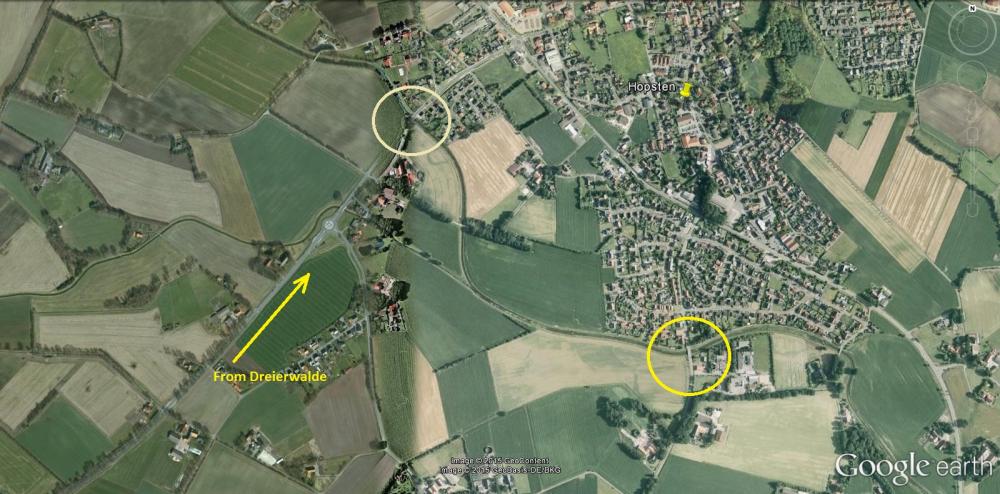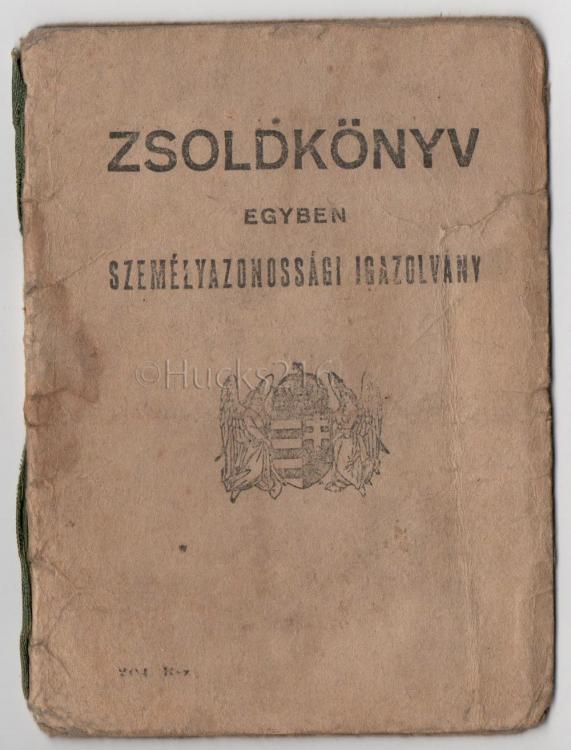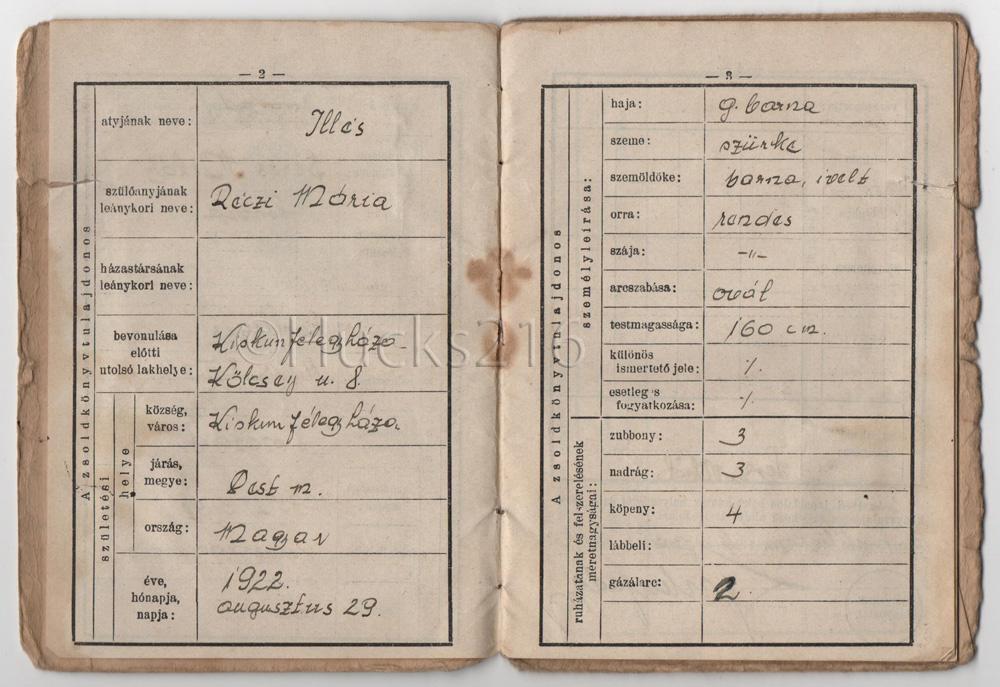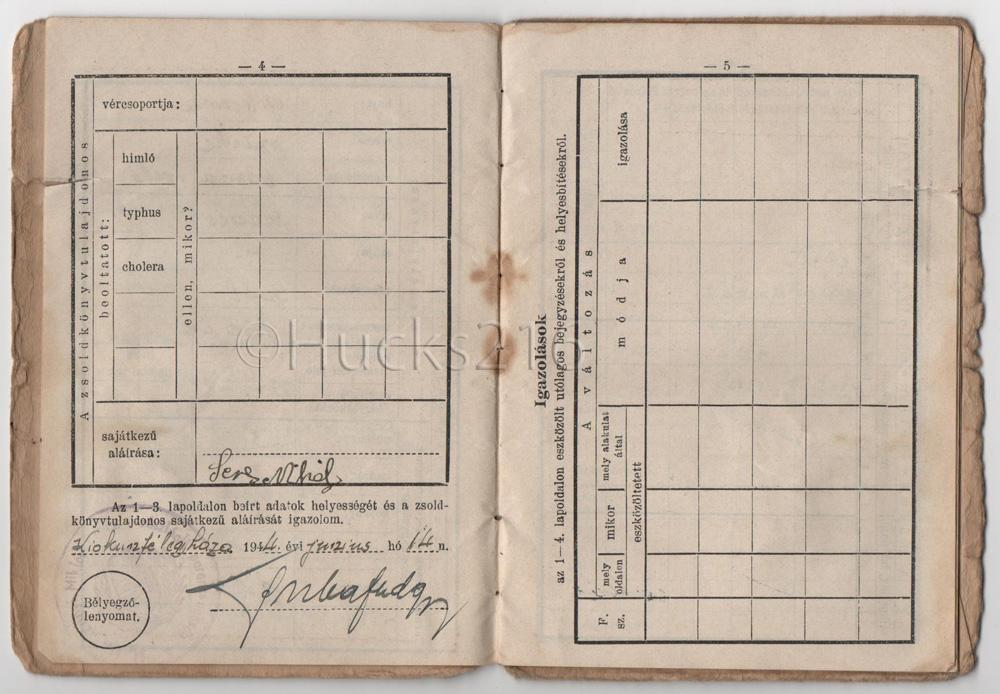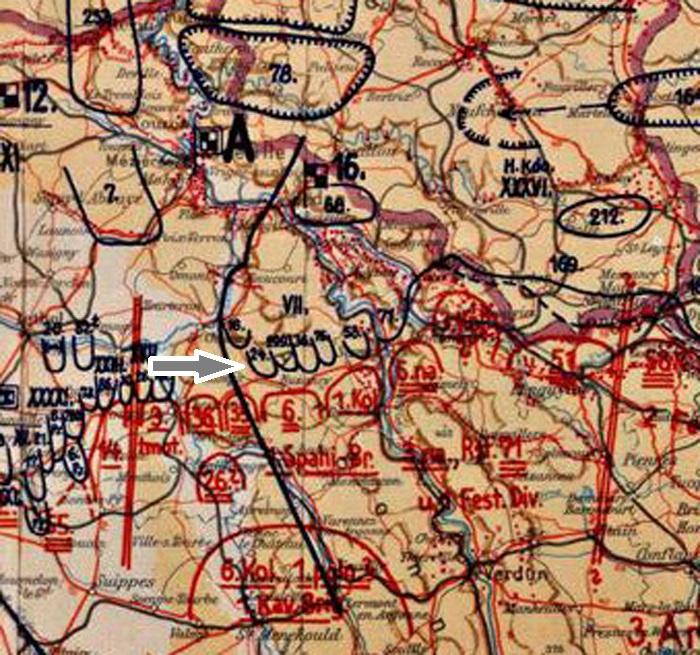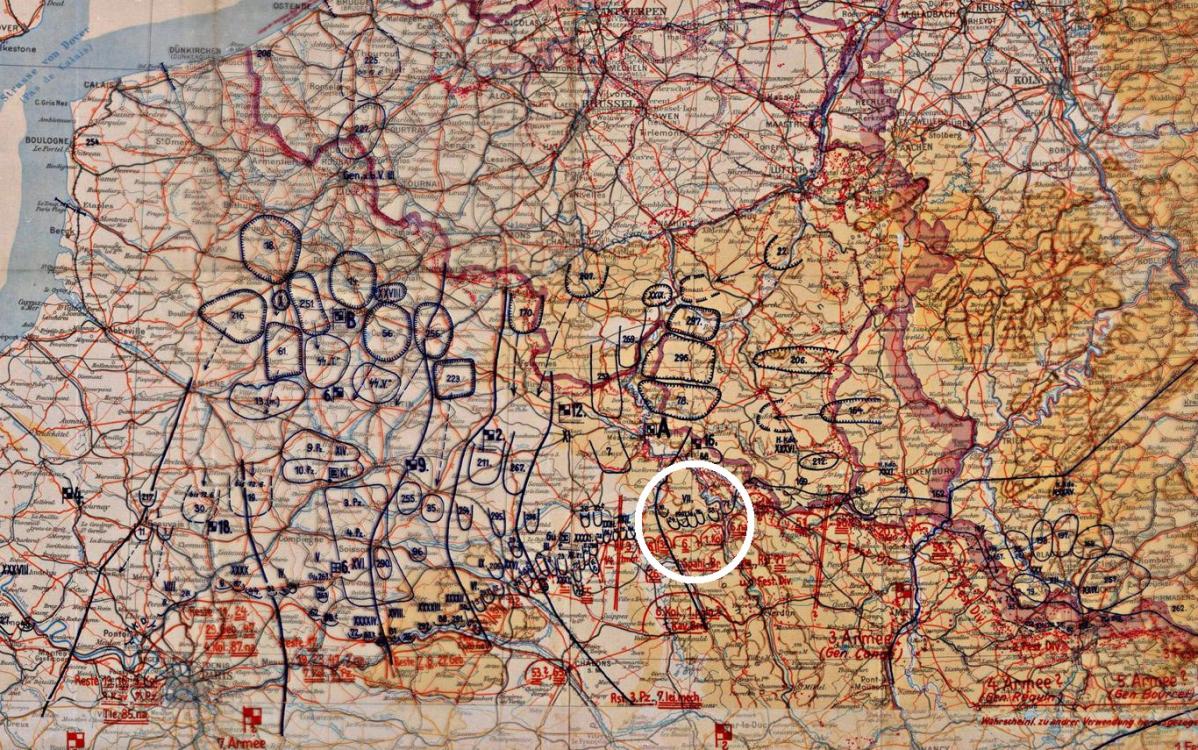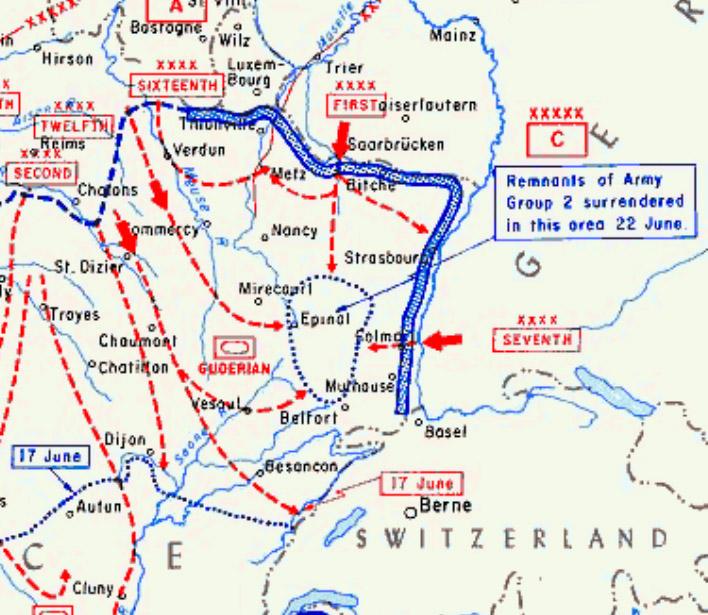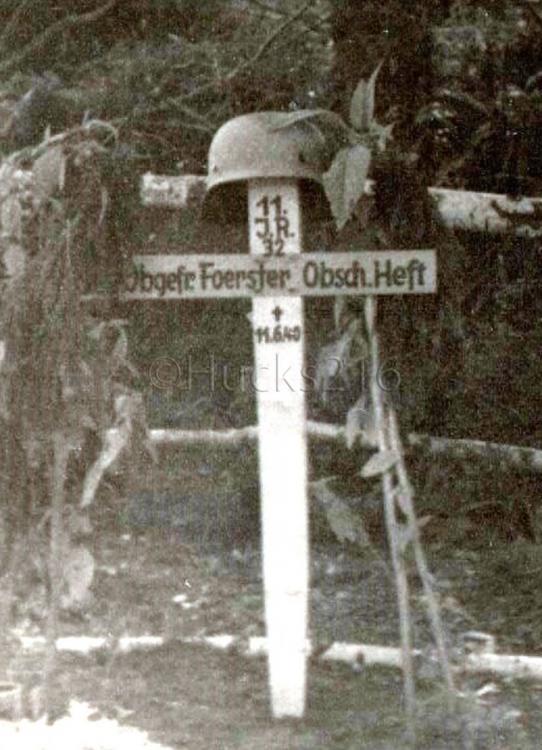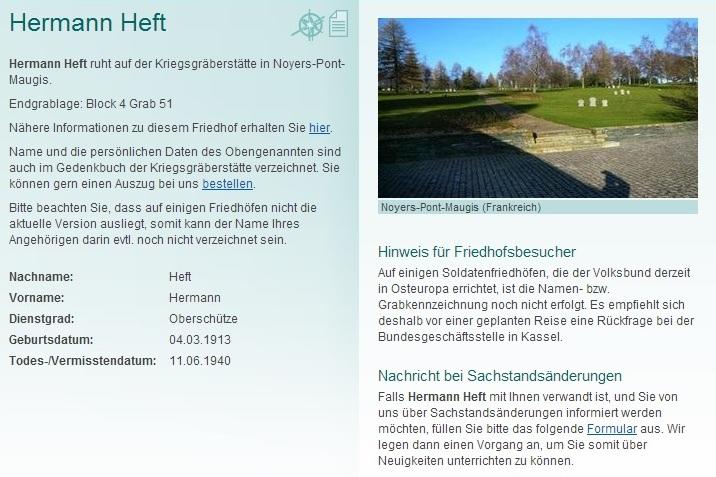-
Posts
3,680 -
Joined
-
Last visited
-
Days Won
9
Content Type
Profiles
Forums
Blogs
Gallery
Events
Store
Everything posted by hucks216
-
LW Flak units don't seem to be the most collectible of units but I don't know why they get overlooked so often as they still saw action, a lot of the time against air raids obviously but also in ground combat. Even during air raids they suffered losses from time to time. This man seems to have got around a bit, starting in Germany and ending up in Greece and the retreat from that region. One of his units was in Africa but for some reason he remained in Germany at that time, although he was only with them for a month. Can you make out what the circled word is? Is that an entry making a note of a shot down aircraft? I can see that it starts with 'Feind....'
-
That's great. Thanks for the prompt reply and all the additional information. Regards KEViN
-
I am wondering if anyone can help to identify this medal please? I acquired a few Soviet era badges & medals for one of my nephews and this medal turned up among them. I collect German WW-2 paperwork so this is a totally unknown field for me and don't know what it is, what country it belongs to or even if it is genuine.
-
There's nothing in the 2nd Tactical Air Force books about attacking seaborne targets on the day of his death which could help to rule out some squadrons related to how he died. It might be worth trawling through this linked page to see if they mention any attacks on any of the VP boats in his flotilla for that date... January 1945 Seekrieg
-
I seems to have one broad part in the middle with a border on either side of a different colour(s). I was going to suggest the Anschluss Medal but I think the border colours for that have the border parts in a different order, i.e. white, black, white on either side but the image seems to suggest black, white, black (or rather dark, light, dark).
-
Taken from a WAF post dating from 2002 - information from Rick (Research) Lundstrum... Boit was a career regular officer in the Imperial navy, 1 April 1913 to 24 November 1919. Leutnant zur See 14.10.17/ern. 18.9.15 charakterisiert Oberleutnant zur See außer Dienst 24.11.19 As of the February 1918 Marine Rangliste, he held the EK2. (that was often far from current on awards!) Served on "Viktoria Luise" to November 1914, then a platoon leader in Matrosen Regiment 5 in Flanders to Decmber 1914. He was a Watch Officer aboard torpedo boats "G8," "G11," and "G9" in that undated order, 10th Half Flotilla/Vth Flotilla to June 1918, then a Watch Officer aboard torpedo boat "S113" in XIIth Flotilla to the end of the war. Married before 1928, member # 3015 of the Marine Offiziere Verband. Between the wars he earned a Diplom Ingenieur ("Dipl. Ing." title in front of his name) and served as an engineer with the city of Hamburg's Wasserbaudirektion and Strom-und Hafenbau Baubehörde. He is listed as Oberleutnant zS dR in the 1937 MOV Directory, but there was never any public list of reserve naval officer commission dates under the Third Reich. Without his personnel file it might not be possible to find out why he won the DKiG. It could of been for a single action or for leadership abilities.
-
Interesting pass and background story. It is interesting to see just how big a part 'awards' seemed to play in the prestige of some soldiers. If his personnel files are at NARA they will be in A3356 Roll 659 which covers the names POHL - POKRANDT. If his file is there then it could shed light on his service from WW-1 to the end of WW-2 (each roll costs $135 to copy and ship to the UK, so it might be cheaper to contact a researcher such as Digital History Archive who might be able to just copy his file rather than getting the whole roll).
-
There seems to be a few of those FB pages popping up at the moment so any indication as to what one would be good. The bogus stamp has been very well done and like you say, if used in the right SB could easily add authenticity to an otherwise bogus award entry. The problem is that it is so easy to make a good stamp - you just need a good clear image of an original (taken from any number of dealer or forum sites), a basic knowledge of Photoshop and some acetate sheets.
-
Likewise to what has been mentioned I also think the last two awards and the Nahkampftage are dubious entries. The only places that those stamps are seen are in relation to those two areas even though there are other entries in the SB covering those time frames which have different stamps. I think they have been used to disguise the entries and bogus signatures. The first Close Combat Day is original I believe with all the others being possibly bogus - Numbers 2 to 12 all seem to have been done in the same ink and yet span a period of almost 18 months.
-
Taken from the Sturmgeschütze vor website... Sturmgeschütz-Abteilung 911 Sturmgeschütz-Brigade 911 (Feb 44) Heeres-Sturmartillerie-Brigade 911 (Dec 44) Feb 43 - formed at Neiße and later transferred to Jüterbog, with three batteries Mar 43 - 1./911 detached to Corsica/Sardinia and replaced Mid-Mar 43 - transferred to the Kharkov-Poltava area of Russia Jul 43 - XXXXVIII Panzer Corps, 4th Panzer Army, Army Group South (22 StuG III and 9 StuH 42) Jul 43 - 25 vehicles operational and 12 under repair Jan 44 - assigned to XXXXVII Panzer Corps, 8th Army, Army Group South, Kirovograd Jun 44 - Sixth Army, Army Group South Ukraine (Kishniev) Aug 44 - XXXXIV Corps, Sixth Army, Army Group South Ukraine; destroyed in Romania and reformed at Lüneberg (Lohburg) with 3 StuG batteries and one Infanterie-Begleit Batterie Dec 44 - assigned to Führer-Grenadier-Brigade (Cottbus) after rebuilding with 34 StuGs Jan 45 - attached to Führer-Grenadier Brigade with three batteries (10 StuGs each)
-
Unfortunately I can't find anyone with that name in the Volksbund although I did find a Karl von Hörsten (Born 27 Jan 1919 in Hörsten) as having been killed 23 Sept 1944 - brother perhaps?. I don't see his brother's name on the Memorial Card either but by the time that was issued he would of been dead anyway so maybe they left his name off or maybe he was a cousin so wasn't mentioned.
-
Nice item with an interesting back story for Sonderverband Bergmann. There is a von Kutzschenbach as having been killed as a Sonderführer on 19th September 1944 but the first name doesn't match (Achim) and nor does the date of birth. Younger brother perhaps? There is also a Major Rolf von Kutzschenbach listed as dying in December 1945 in a PoW camp in Russia and born in 1888.
-
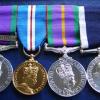
Großdeutchland tunic
hucks216 replied to ccj's topic in Germany: Third Reich: Uniforms, Headwear, Insignia & Equipment
Does the tunic have any provenance? -
Thanks to Brian I was able to add this example to my GD collection. It is an EK I citation to an officer who served in a late war GD Kampfgruppen. Regiment Poeschmann was formed in March 1945 from soldiers who were undergoing training at a GD officer's school and was placed under the command of 15 Panzergrenadier Division. They went into combat on the Western Front against British troops in the vicinity of Hopsten in early April 1945. The officer was responsible for defending a bridge just to the south of Hopsten and won the EK I for beating off a British armoured attack (44 RTR) coming from the direction of Dreierwalde, which is 8.5km to the southwest of Hopsten and with a road directly between the two leading to a bridge to the southwest of Hopsten. The citation is signed by Oberst Wolfgang Gläsemer (RK & DKiG). His actions were even mentioned in a subsequent GD Battalion report (complete with bombastic detail - I hardly think the soldiers were singing while under attack): "...These losses seriously weakened the right wing of the 5.Kompanie and as a result a renewed enemy attack was successful. Under covering tank fire, the infantry broke into the main line of resistance on the company's right wing and took two prisoners. Our artillery fire recognised the situation and blanketed the enemy tanks with well-aimed fire, causing them to leave the infantry and withdraw to the south. Leutnant Järschke used this moment to lead two men in a counterattack on his threatened wing. His actions inspired his men who, though out of ammunition, had nevertheless stayed in their holes singing 'Wach am Rhein', and they advanced with him and cleared the break-in point in hand to hand combat. Forty-two enemy dead were counted after this engagement." It is interesting to compare that description with that from the British side which claims that a GD Battalion gave them little trouble, although it does mention the Scots Greys & 155th Brigade meeting tough opposition south of Hopsten. which could actually refer to Leutnant Järschke's counterattack. As the British didn't break through Hopsten and reach their objective for 2 days the truth is probably somewhere between the two. Whether the citation is slightly incorrect by mentioning he was to the south of the town or he moved across to the bridge to the southwest to help defeat the Allied thrust by 44 RTR is uncertain but as well as the bridge to the southwest of Hopsten there is also one to the south.
-

hungary 1944 Hungarian Soldbuch
hucks216 replied to hucks216's topic in Central & Eastern European States
If that is indeed his old house that is a great little extra piece to add to the Soldbuch. Thanks. -

hungary 1944 Hungarian Soldbuch
hucks216 replied to hucks216's topic in Central & Eastern European States
That is great, many thanks for translating the entries and especially revealing his unit. It is much appreciated. -
Usually I collect German Soldbücher & Wehpässe but a couple of weeks ago I saw this Hungarian example and liked the photo in it (and it was cheap) so thought that I would go off on a tangent with regards to the collection and buy it. It is dated for 1944 and while I have no knowledge of the language I don't think it mentions any units that he was assigned to. I think it just contains personnel information but I could be wrong - and if I am I would be grateful for any information. These are the only pages with entries.



